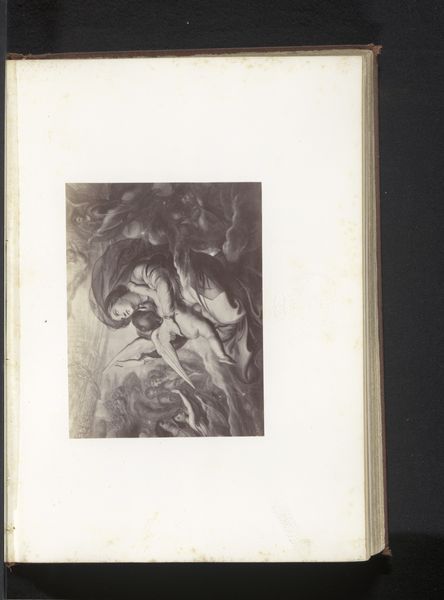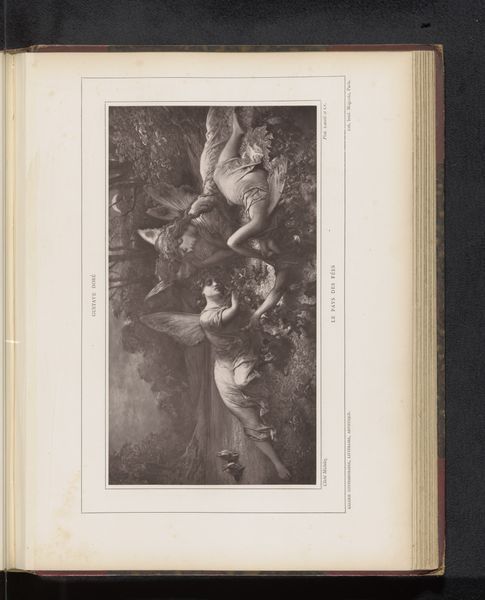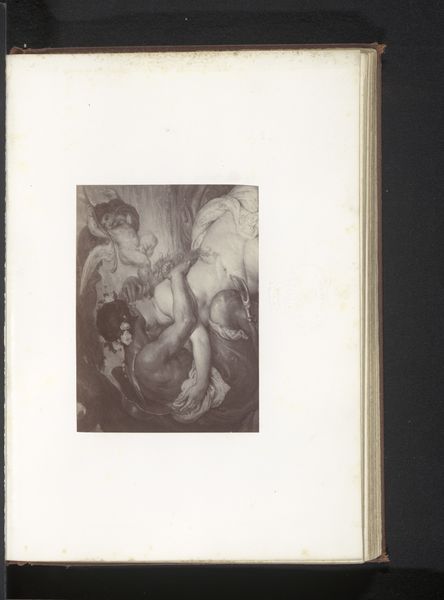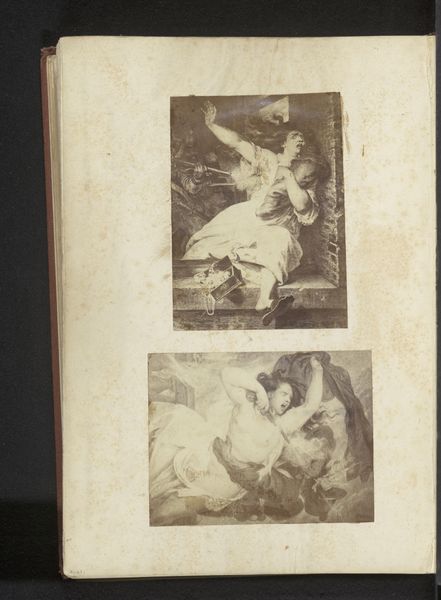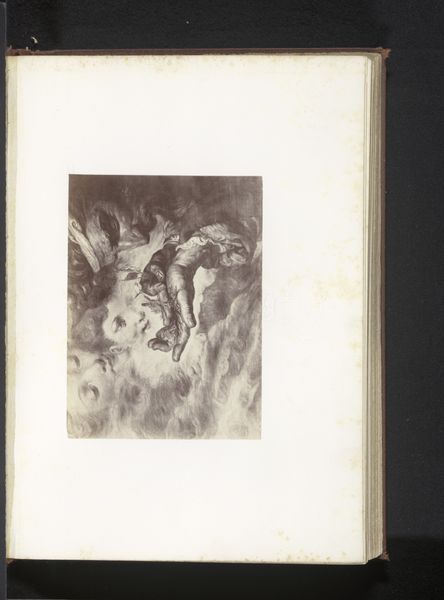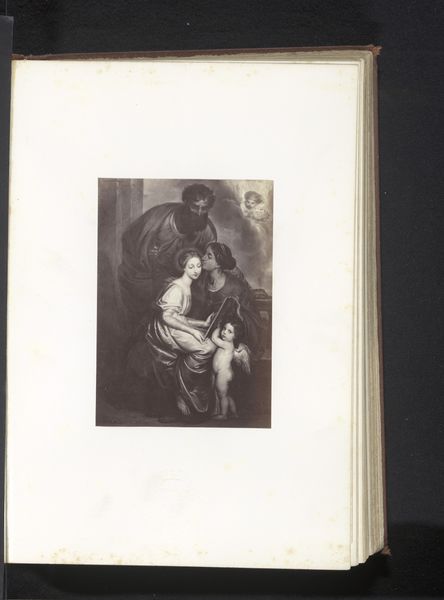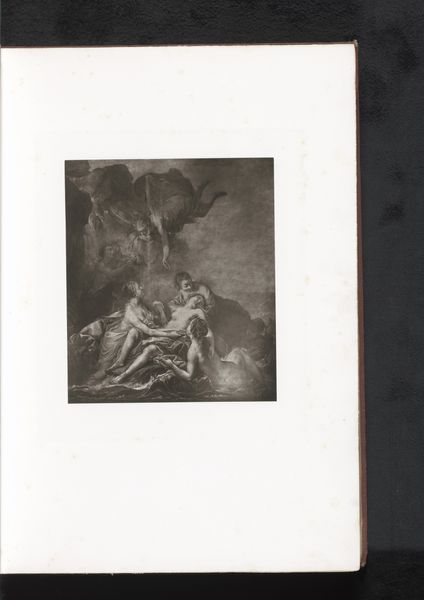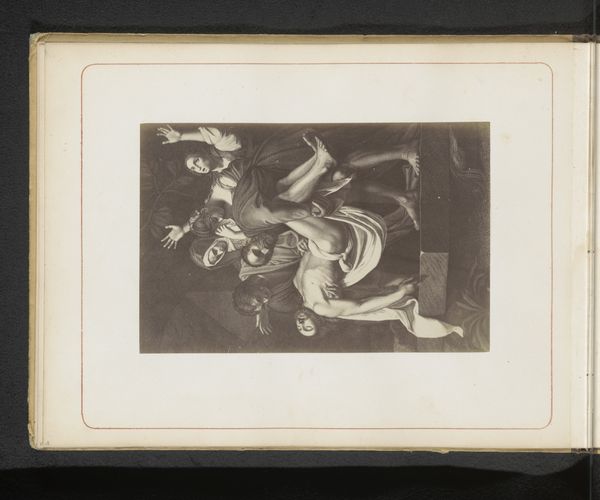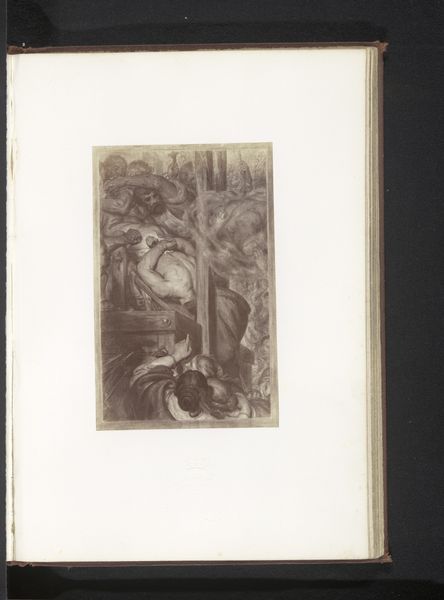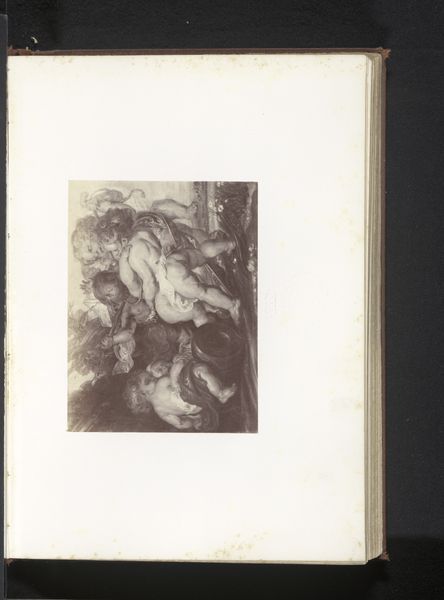
Fotoreproductie van een schilderij, voorstellende een portret van Augustus Hare en zijn drie broers tussen wolken before 1876
0:00
0:00
print, photography
#
portrait
# print
#
photography
#
child
#
group-portraits
#
history-painting
Dimensions: height 83 mm, width 117 mm
Copyright: Rijks Museum: Open Domain
Editor: This is a photo reproduction of a painting entitled "Portrait of Augustus Hare and his three brothers between clouds", made before 1876. It is photography printed over a photograph. What’s interesting about a photograph of a painting portraying someone ascending towards heaven? Curator: Well, we have a reproductive medium – photography – disseminating an image initially created through the skilled labor of painting. I see it as less about "heaven" and more about how images of power and privilege were circulated. The Hare family, like many others, used these technologies to propagate a carefully crafted image. Consider the expense and effort involved in commissioning the original painting, and then further reproducing it via photography. What does that tell us? Editor: It sounds like the painting wasn’t enough, they needed a reproducible image to maintain or signal status to their community. This reproductive element further emphasizes the act of visual distribution… and perhaps manipulation of the image, no? Curator: Precisely. We should ask how photography, at the time still a relatively new medium, served the needs of the elite. Was it about democratization of images, or simply a new tool for reinforcing existing hierarchies? Furthermore, think about the labor involved: the photographer, the printer, all contributing to this…assembly line of status. And note how different levels of artistic creation comingle. Do you notice anything about how they were portrayed? Editor: They appear rather angelic and ethereal, positioned amidst the clouds; it is hard to tell who exactly produced the work to begin with… Are you suggesting this representation aims to sanitize their history or legitimize their lineage? Curator: It certainly presents a specific, idealized version. But think about the very *act* of commissioning such a portrait. What kind of social or family stories were they intending to write about themselves? Who was able to do it? Editor: That’s true, that in itself would dictate the accessibility of such imagery. Curator: Indeed. It reminds me how accessible this would be nowadays…food for thought about the image circulation machine. Editor: Well, it definitely reframed my way of considering not just the portrait itself but the medium, and how intertwined that is to material condition.
Comments
No comments
Be the first to comment and join the conversation on the ultimate creative platform.
